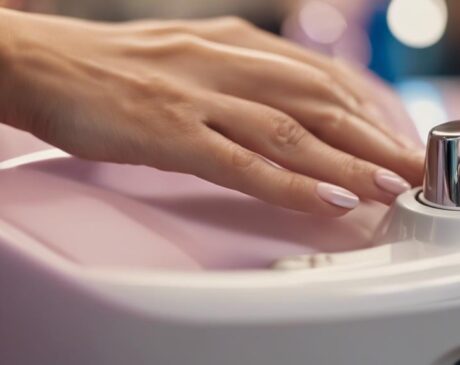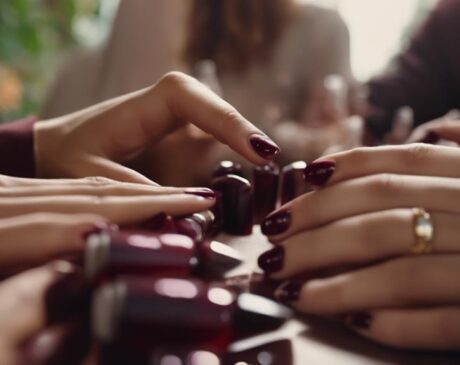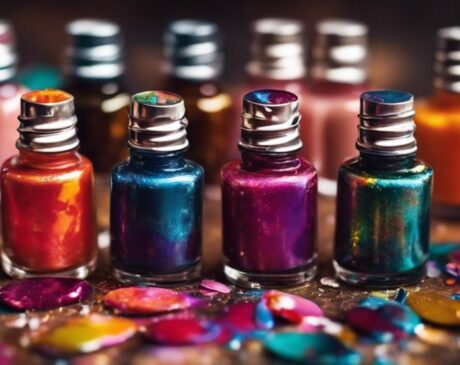Is It Good to Use UV Light on Nails?
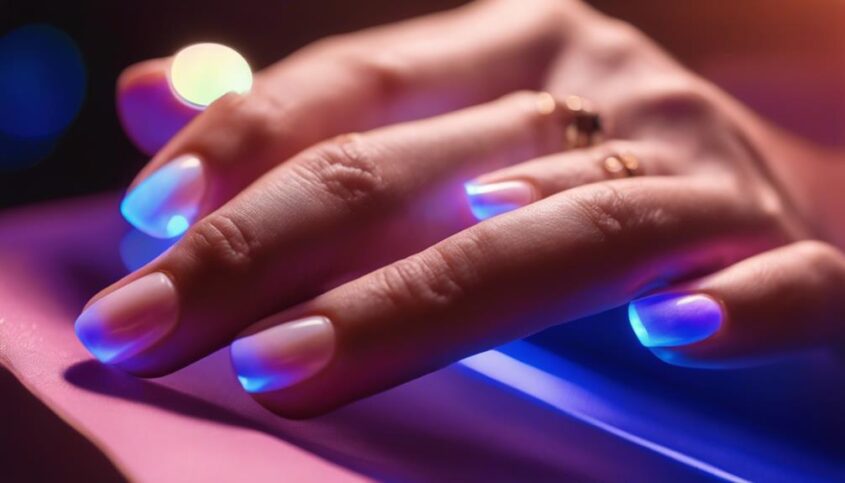
UV light is commonly used in nail curing, but it carries risks. Prolonged exposure may lead to skin damage and skin cancer risks. Safety measures like sunscreen, gloves, and eye protection are crucial. Monitoring exposure time and distance is essential. Alternative options like LED lamps and natural sunlight exist. Tips include using UV protective gloves and limiting exposure time. Prioritize safety and consider consulting with a dermatologist for personalized advice. Understanding the risks and benefits of UV light in nail treatments is vital for informed choices. Learn more about UV nail lamps, safety measures, and alternatives for nail curing.
Key Takeaways
- UV light aids in gel manicure curing for longer-lasting, glossy results.
- UV exposure risks include skin damage and cancer, necessitating protective measures.
- LED lamps offer faster curing times and cost-effectiveness as alternatives.
- Consider natural sunlight for eco-friendly gel polish curing.
- Prioritize safety with UV-protective gloves, sunscreen, and limited exposure.
Potential Risks of UV Nail Lamps
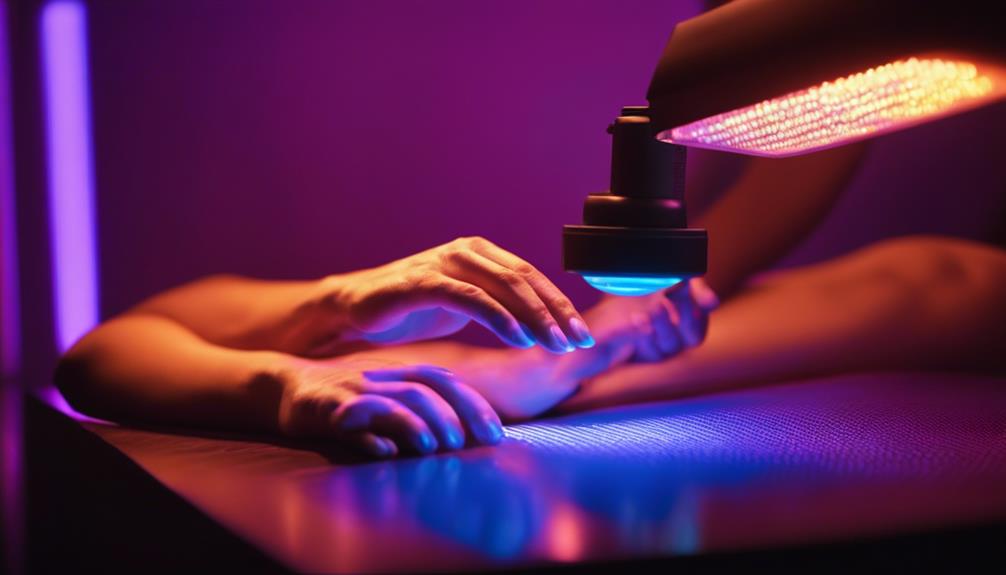
UV nail lamps, commonly used in salons for curing gel nail polish, have raised concerns due to the potential risks associated with prolonged exposure to UV radiation. While these lamps provide efficient curing times, the UV light emitted during the process falls within the UVA spectrum, which is known to penetrate the skin deeply. Prolonged and repeated exposure to UVA radiation can lead to skin damage, premature aging, and an increased risk of skin cancer.
Salon customers and nail technicians, who are consistently exposed to UV nail lamps during manicures, are particularly at risk. The cumulative effects of regular UV exposure raise concerns about the long-term consequences on skin health. To mitigate these risks, it is essential for both salon clients and professionals to take precautions such as applying broad-spectrum sunscreen or wearing protective gloves with UV-blocking capabilities.
Innovations in nail technology are continuously being developed to address these concerns, with some manufacturers introducing LED nail lamps as an alternative to traditional UV lamps. LED lamps offer faster curing times and emit lower levels of UV radiation, reducing the potential risks associated with prolonged exposure. As the beauty industry progresses, prioritizing safety and wellness remains paramount in the evolution of nail care practices.
Benefits of Using UV Light
Utilizing ultraviolet light in nail treatments offers several advantageous benefits that contribute to the efficiency and durability of manicures. UV light helps in the curing process of gel manicures, ensuring a faster and more thorough hardening of the polish. This results in a longer-lasting manicure that is less prone to chipping or smudging, providing clients with extended wear time. Additionally, UV light aids in creating a glossy finish on nails, enhancing the overall aesthetic appeal of the manicure.
Moreover, UV light can also play a role in promoting nail health. It can help in the prevention of fungal infections by effectively killing bacteria and fungi that may be present on the nails. This added level of sanitation contributes to a safer and more hygienic nail treatment experience for clients. Overall, the use of UV light in nail treatments not only enhances the aesthetic outcome but also helps in maintaining the health and longevity of the manicure.
Safety Precautions to Follow
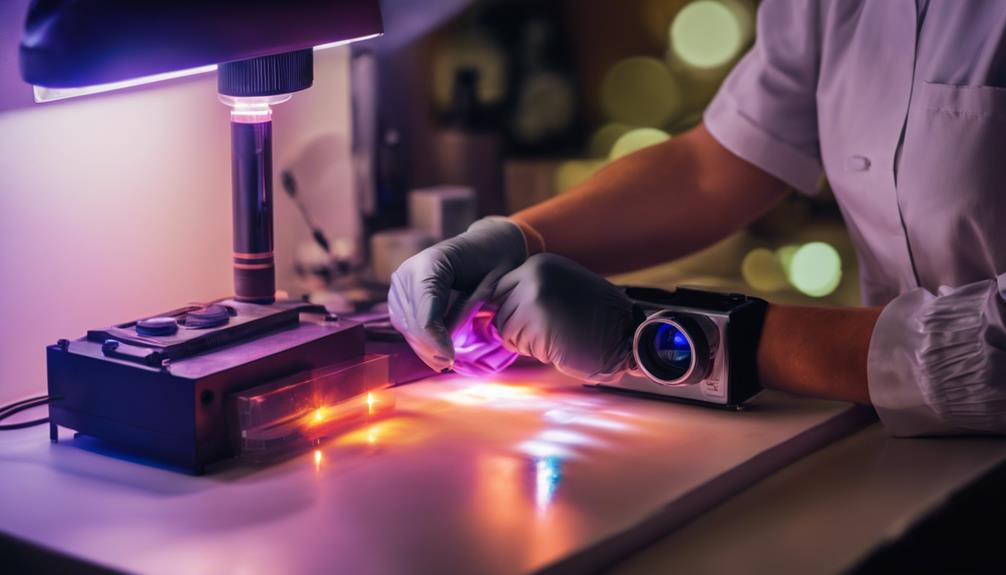
When using UV light on nails, ensuring eye protection measures and proper ventilation is crucial to minimize any potential risks associated with exposure. Protecting your eyes from the UV light emitted during the nail curing process is essential for long-term eye health. Additionally, maintaining proper ventilation in the workspace helps to reduce the inhalation of any fumes that may be released during the nail application process.
Eye Protection Measures
To ensure the safety of your eyes when using UV light on nails, it is essential to wear appropriate protective eyewear. UV light exposure can potentially harm the eyes, leading to conditions such as cataracts or corneal damage. When selecting protective eyewear, opt for goggles that are specifically designed to block UV radiation. These goggles should fit securely around the eyes to prevent any UV light from reaching them. Additionally, ensure that the eyewear covers the entire eye area to provide maximum protection. By wearing suitable protective eyewear during UV nail treatments, you can safeguard your eyes from potential harm and continue to enjoy nail enhancements safely.
Proper Ventilation Requirements
When using UV light on nails for treatments, ensuring proper ventilation requirements is crucial to maintaining a safe environment and reducing exposure risks. Adequate ventilation helps in minimizing the inhalation of potentially harmful fumes and vapors that may be emitted during the curing process. Below is a table highlighting essential ventilation requirements to consider when using UV light for nail treatments:
| Ventilation Requirement | Description |
|---|---|
| Use of Exhaust Fans | Install fans to remove airborne particles and maintain air circulation. |
| Natural Ventilation | Utilize windows or doors to allow fresh air to flow into the space. |
| Ventilation Masks | Wear masks to prevent inhaling chemical fumes. |
| Regular Air Quality Checks | Monitor air quality levels periodically to ensure a safe working environment. |
Understanding UV Exposure Levels
Understanding UV exposure levels is crucial when using UV light for nail treatments. UV safety guidelines must be strictly followed to minimize the potential risks associated with prolonged exposure. Proper protection measures, such as wearing UV-blocking gloves and goggles, are essential to safeguard against harmful UV rays.
UV Safety Guidelines
Navigating safe UV exposure levels is crucial when utilizing UV light on nails. To ensure safety and minimize risks, consider the following guidelines:
- Limit Exposure Time: Follow recommended exposure times to prevent overexposure.
- Use Protective Gear: Wear gloves or sunscreen to shield the skin from UV rays.
- Maintain Distance: Keep a safe distance between the UV light and your skin to reduce direct exposure.
- Monitor Skin Sensitivity: Be mindful of any skin reactions and adjust exposure accordingly.
- Invest in Quality Equipment: Use reliable UV lamps with proper wavelength and intensity controls.
Potential Risks Involved
Exposure to UV light during nail treatments poses potential risks that require a thorough understanding of UV exposure levels. While UV light is essential for curing gel polish efficiently, improper exposure can lead to adverse effects on the skin, such as premature aging and an increased risk of skin cancer. It is crucial to monitor the intensity and duration of UV exposure during nail treatments to minimize these risks. Innovations in nail salon technology have led to the development of safer UV lamps with lower emission levels, reducing the potential harm to clients. By staying informed about UV exposure levels and utilizing advanced equipment, nail technicians can provide services that prioritize both the aesthetic outcome and the well-being of their clients.
Proper Protection Measures
To ensure the safety of clients during nail treatments, it is imperative for nail technicians to be mindful of the potential risks associated with UV exposure levels. Understanding UV exposure is crucial in the nail industry to protect both clients and professionals. Here are some key measures to consider:
- Use UV protective gloves during treatments.
- Invest in UV protective eyewear to shield the eyes.
- Apply broad-spectrum sunscreen to exposed skin.
- Implement proper ventilation in the workspace.
- Keep UV lamps maintained and replace them regularly to ensure safe UV levels.
Alternatives to UV Nail Lamps
One common alternative to UV nail lamps for curing gel polish is using LED nail lamps. LED nail lamps use light-emitting diodes to cure gel polish quickly and efficiently. Compared to UV lamps, LED lamps have a faster curing time, typically ranging from 30 to 60 seconds per layer. Additionally, LED lamps are known for their durability, lasting up to 50,000 hours of use. This longevity makes them a cost-effective option for both professional salons and at-home users.
Another alternative to UV nail lamps is using natural sunlight. While it may not be as quick or consistent as UV or LED lamps, natural sunlight can effectively cure gel polish. Simply apply the gel polish and allow it to dry in direct sunlight for a few minutes. This method can be a convenient and environmentally friendly option for those looking to avoid artificial light sources. Furthermore, some gel polish brands offer formulas that are specifically designed to cure under natural sunlight, providing users with a safe and effective alternative to UV nail lamps.
Tips for Safe UV Nail Lamp Use
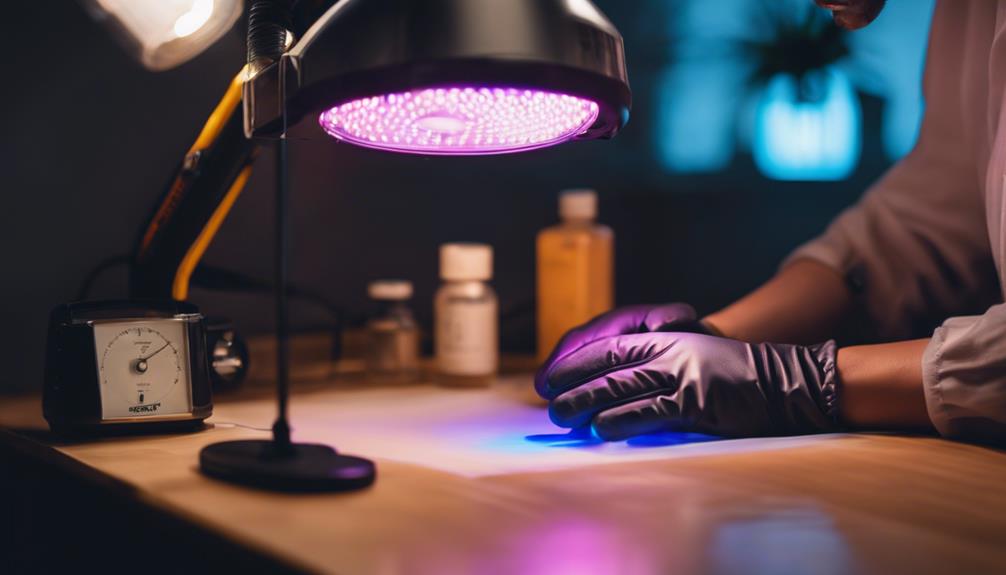
When using UV nail lamps, ensuring proper safety measures can help protect your skin and eyes from potential harm. To make your UV nail lamp experience safer and more enjoyable, consider the following tips:
- Use UV protective gloves: Wearing gloves designed to block UV rays can shield your hands from potential damage.
- Apply broad-spectrum sunscreen: Before using the UV lamp, apply sunscreen to your hands to provide an extra layer of protection.
- Keep a safe distance: Position your hands at a safe distance from the UV lamp to reduce direct exposure to UV radiation.
- Limit exposure time: Avoid prolonged exposure to UV light by following the recommended curing times for your nail products.
- Consider LED lamps: LED nail lamps are a safer alternative to UV lamps, as they emit lower levels of UV radiation while curing nails efficiently.
Conclusion: Making Informed Choices
In making informed choices regarding UV nail lamp use, prioritizing safety and understanding the risks associated with UV exposure is paramount. While UV lamps offer efficiency and convenience in drying nail polish, it's essential to weigh the benefits against the potential health implications. Opting for LED lamps, which emit lower levels of UV radiation, can be a safer alternative. Additionally, using broad-spectrum sunscreen on hands before exposure can help mitigate UV damage.
Considering individual factors like skin sensitivity and existing conditions is crucial when deciding on UV nail lamp use. Regularly monitoring exposure time and incorporating breaks can reduce the risk of adverse effects. Consulting with a dermatologist for personalized recommendations can provide valuable insights into minimizing UV-related harm.
Frequently Asked Questions
Can UV Light From Nail Lamps Cause Skin Cancer?
Exposure to UV light from nail lamps has raised concerns about its potential link to skin cancer. Research indicates a risk, urging caution. Adhering to safety measures, such as using sunscreen, can help mitigate any harmful effects.
Are There Any Long-Term Effects on the Health of Nails From Using UV Light?
Long-term exposure to UV light during nail treatments may lead to potential weakening of nail structure, increased risk of brittleness, and susceptibility to damage. Proper precautions, such as using protective measures, are essential for nail health.
How Often Should UV Nail Lamp Bulbs Be Replaced to Maintain Safety and Effectiveness?
To maintain safety and effectiveness, UV nail lamp bulbs should be replaced approximately every 6 months or after 100 hours of use. Regularly changing bulbs ensures proper curing and reduces potential risks associated with prolonged exposure.
Is It Safe to Use UV Nail Lamps During Pregnancy or While Breastfeeding?
During pregnancy or breastfeeding, caution is advised when considering UV nail lamp use due to potential risks associated with UV exposure. Consulting a healthcare provider for personalized advice is recommended for safety.
Are There Any Specific Skin Conditions or Medications That May Increase the Risk of Negative Reactions to UV Light on Nails?
Certain skin conditions like lupus, eczema, or medications like antibiotics, acne treatments, or retinoids can increase the risk of negative reactions to UV light on nails. Consult a dermatologist for personalized advice.

